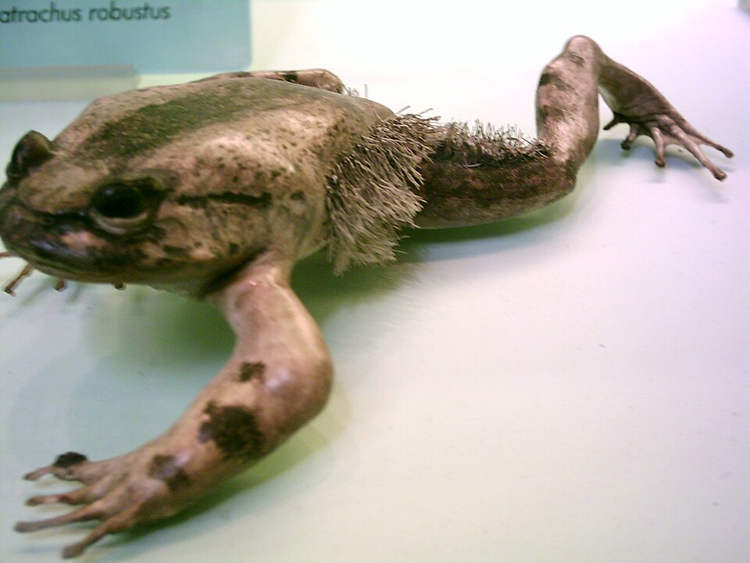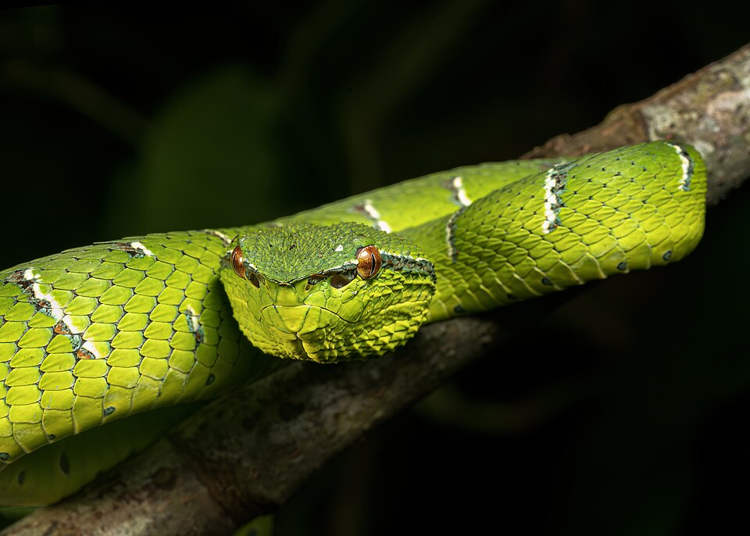It’s hard to imagine a fragile spider killing and eating a full-grown bat. I mean there’s no way a tiny spider could have any sort of muscle power over a fully grown bat, right? Believe or not, there are eight-legged bugs out there that can pounce on bats and eventually devour them. And when they can’t, they rely on their superior web-spinning skills to get the job done.
One of the earliest sightings of bat-eating spiders occurred way back in 1941, when Indian scientist G.C. Bhattacharya (of the Bose Research Institute) walked into a cowshed in a village near the city of Calcutta. In a letter to an unknown publication, he wrote a detailed account of his experience: “Entering into the cowshed, I noticed a pipistrelle bat struggling to drag itself out of a crevice between two bamboo strips of a wall and a big house-spider was seen firmly gripping the former by the neck with its powerful mandibles.” No matter how much the little bat kicked, and screamed and flailed, the spider held on with a death-grip. “There was intermittent gasping and screaming of the bat,” Bhattacharya wrote.
Eventually, he focused a torch on the spot and as soon as the light fell on the pair, the bat screamed loudly and managed to drag itself through a certain distance on the matted shed wall. About 20 minutes later, the bat, thoroughly exhausted, stretched out its wing and gave in. Bhattacharya then captured both victim and predator in a glass jar and took them home for closer observation. The next morning, he found the spider resting peacefully at the top of the jar, while the bat lay dead at the bottom, untouched. It had visible injuries to its neck and had died sometime during the night.
Photo: Nyffeler M, Knörnschild M (2013) Bat Predation by Spiders
Martin Nyffeler from the University of Basel (Switzerland) and Mirjam Knornschild from the University of Ulm (Germany) recently conducted a study to find out just how often the spiders preyed on bats. They went through several published research papers, blog posts and Flickr images. They also interviewed scientists who studied the subject and veterinarians who worked at bat hospitals. Through their research, they discovered 52 individual reports of bats caught by spiders, both in actively hunted as well as trapped in webs. 29 of these stories had never been published before.
Photo: Nyffeler M, Knörnschild M (2013) Bat Predation by Spiders
They uncovered reports from every continent except Antarctica, but found that most of the reports came from tropical regions. Today, it is well known that 90 percent of these spiders reside in warmer regions – around the equator, between the tropics of Cancer and Capricorn. About 40 percent inhabit South America and tropical regions of North America. 30 percent live in Asia and the remaining are found in Australia and Papua New Guinea.
Photo: Nyffeler M, Knörnschild M (2013) Bat Predation by Spiders
In most of the incidents recorded by Martin and Mirjam, the spiders were quite large, 10 to 15 cm legspan and one to seven grams in weight. A majority of the spiders were nocturnal web builders, spinning webs up to 1.5 meters across. Occasionally, groups of spiders got together to build several interconnected webs. Most of these webs were found near buildings inhabited by bat colonies. Only 12 percent of the spiders were able to catch bats without the aid of webs. Tarantulas in particular, were found eating small bats in the tropical rainforests of Peru, Ecuador and Brazil. The victim bats were quite small in comparison – 10 to 24 cm wingspan and three to eight grams in weight. A majority of these bats were small or juvenile insect eaters. Once caught, they usually died of exhaustion while trying to free themselves, or dehydration, or starvation, or even over-heating.
Photo: Nyffeler M, Knörnschild M (2013) Bat Predation by Spiders
Sometimes the spiders attacked the bats, killing them during the struggle. There are also cases of spiders eating bats that they found dead. 52 reports of bat killings in about 100 years doesn’t sound like a lot. In fact, Martin and Mirjam were quite surprised at the low number, considering the sheer number of spider webs out there in the wild. So they concluded that bats might actually be smarter than we think, avoiding the spider webs with the help of echolocation.
Photo: Nyffeler M, Knörnschild M (2013) Bat Predation by Spiders
Individual silk threads might be hard to echolocate, but the dense decorations and barriers that spiders place on their webs, and the spiders sitting in the web center are large enough for bats to detect in flight and avoid. So while spiders have the ability to kill bats, the bats can easily detect and avoid spiders. In the end, I suppose nature does balance everything out.
Photo: Nyffeler M, Knörnschild M (2013) Bat Predation by Spiders
Photo: Nyffeler M, Knörnschild M (2013) Bat Predation by Spiders
Photo: Nyffeler M, Knörnschild M (2013) Bat Predation by Spiders
Sources: Wired Magazine, Mentalfloss, Livescience, PLOSone Journal





















